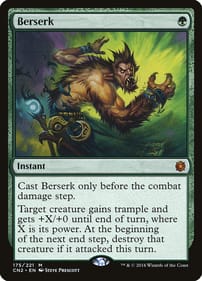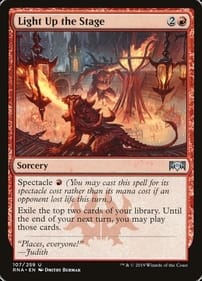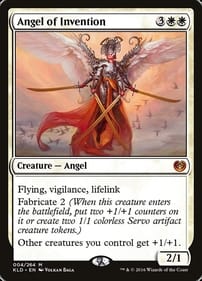The Year in Comics, 2025 Edition
By Dan Brown Another year gone! That means it’s time again to pick out the highlights from the last 12 months in the comics and graphic-novel world. As I always say when introducing the annual list, the categories are entirely my own invention, the choices reflect my tastes and no else’s, and I would love to see you chime in with your own picks! Best graphic novel of the year: Contenders include Jeff Lemire’s 10,000 Ink Stains (more of a memoir than a graphic novel, I know), Guy Delisle’s Muybridge and David Petersen’s Mouse Guard: Dawn of the Black Axe (yes, I know it will be several weeks before it appears in collected form), but I am going with D. Boyd’s Denniveniquity, which recounts the creator’s misadventures growing up in 1970s New Brunswick. I was transported back in time to a different Canada, and the book’s central character made me laugh! Best comic of the year: I’m going to say the J.Michael Straczynski-written Doctor Doom & Rocket Raccoon No. 1, in which the Latverian ruler drafts the genetically engineered rodent to help him travel back to a time before the Big Bang to understand the purpose of the universe. It includes a Jack Kirby-inspired collage, which got me excited. Local comics coming on strong: With offerings like Scott Wojcik and Jeff McClinchey’s Probed and Loaded, as well as Jeff McClinchey and Scott Brian Woods’ Black Helm Saga, it was a strong year for local creators. Speaking of which, Byron comic creator Jeff Lemire took over art duties on Skottie Young’s I Hate Fairyland this year! Best graphic novel I read this year not from this year: The second volume of Chip Zdarsky’s Public Domain came out in February, collecting previously published issues. As I wrote, “it’s a sophomore collection that enriches the storyline of an ongoing comic series, putting the characters in new and surprising situations.” Best comic adaptation of the year: The Sook-Yin Lee version of Chester Brown’s Paying For It came to London in 2025, and it stayed with me long after I saw it last winter. Brown himself sat a couple rows over. Most underwhelming comic adaptation: This is a tie between this summer’s Superman and Fantastic Four: First Steps. There, I said it. These movies were popular for about one second, and consider this: The best character in Superman is Krypto, the superdog. The most intriguing character in Fantastic Four is Doctor Doom, who is in the thing for like half a second. Blerg. Comic adaptations still hanging in: Despite all the talk of superhero fatigue, there were four such motion pictures in the domestic box office’s Top 12 for 2025: Superman (No. 3), Fantastic Four (No. 7), Captain America; Brave New World (No. 10), and Thunderbolts (No. 12). What was cool for comic fans is that for Superman and the FF movie, magazine-sized digests were published showing the stories that inspired each movie. Most confusing comic marketing: As part of the industry crossover involving the two biggest comic companies, DC released the one-shot Batman Deadpool and Marvel released Deadpool Batman. Got it? These were two different things. Creators involved with the making of these titles had to take to social media to combat the resulting confusion. Best local comics-marketing move: Joe Ollmann helped put together Bonk’d Volume 1, which collects work from Hamilton-based and -connected comic creators (Ollmann also has The Woodchipper coming out next year, his latest collection of short stories, which I am eagerly anticipating). Comic villain of the year: Alberta Premier Danielle Smith took aim at graphic novels in school libraries, particularly the ones depicting LGBTQ relationships. I thought we were done with comic witch hunts in the 1950s, but apparently not. Biggest comics-adjacent development of the year: Netflix’s animated movie K-Pop Demon Hunters has caused quite a stir, although I have yet to see it. Now, it’s over to you! Tell me in the comments about your picks for this year! Dan Brown has covered pop culture for more than 33 years as a journalist and also moderates L.A. Mood’s monthly graphic-novel group.
I Recommend the Movie Version of Paying For It
By Dan Brown The movie version of Chester Brown’s Paying For It is a well-crafted, warm, funny film. If you’re a fan of Canadian graphic novels, as I am, you should see it. The best part is Ottawa-born actor Dan Beirne’s portrayal of Chester, the cartoonist who seeks out sex workers after he gets dumped by his girlfriend. In real life, the dumper was one-time MuchMusic VJ Sook Yin-Lee, who directed the adaptation. Where the book focuses on Chester, the movie gives equal airtime to Lee’s side of the story, although on the big screen her character’s name is Sonny. You may know Brown as one-third of the Toronto cartoonist troika that also included Seth and the late Joe Matt. Brown is widely known for his graphic-novel history of Louis Riel. Paying For It (the graphic novel) came out in 2011 and relates his search for sex without any strings attached, which he finds with the city’s prostitutes. It’s one of those personal stories that typify the autobiographical Canadian graphic novel school of cartooning. I think it’s fair to say Brown wrote Paying For It to demystify sex work and johns. The book’s happy ending occurs when Brown finds one particular sex worker to patronize exclusively, eventually working out an arrangement in which he is her only customer. So yeah, it’s not the same old love story. “Romantic love is bullshit, and I’m not wasting any more time chasing it,” Beirne-as-Brown tells his friends. I saw Paying For It when it played in London for less than a week earlier this year. The good news is you don’t need to rush to a theatre because there’s no real reason to see it on the big screen. Seek it out when it comes to TV or streaming. Granted, Lee has some amazing compositions – the opening shot of Beirne at the drawing table is patterned after a 1668 Johannes Vermeer oil painting – but otherwise it’s not an overtly cinematic piece. Its strength lies elsewhere. I would never have picked Beirne to play Chester Brown. Clearly, Lee understood he could nail the shy comic creator, holding the whole movie together with his nebbish charm. He goes through his many encounters with sex workers with a kind of refreshing earnestness, an eager naif who wants to decode the mysteries of how to be a paying client, His circle of friends includes three other Toronto cartoonists who meet regularly to chat. There’s a lot of humour that comes from Brown’s attempts to explain his prostitution journey to his pals. The movie also does a really good job of evoking 1990s Toronto. Lee filmed scenes in the same apartment where she and Chester lived together, so you can’t get more authentic than that. Sonny, her stand-in, works for MaxMusic, which is run by an annoying/inspiring entrepreneur who is a lot like Moses Znaimer. The only element that seems missing is, although there is one scene of the aftermath of police violence on a sex worker’s apartment, we don’t see much of them outside Chester’s visits. As a viewer, I wanted to know more about their lives when they’re off the clock. I won’t spoil the ending too much, but a sad event momentarily reunites Chester and Sonny, bringing them full-circle – they are no longer the people they were at the start of the film, even if they still care for each other.. If Canadian graphic novels are your thing, you should check it out. Dan Brown has covered pop culture for more than 32 years as a journalist and also moderates L.A. Mood’s monthly graphic-novel group.
Are New Stamps a Sign We’ve Reached Peak Graphic Novel?
By Dan Brown It’s an honour few receive and fewer deserve. It’s not something young Canadians aspire to, but it’s arguably more prestigious than getting a spot on Canada’s Walk of Fame, having your name on the Stanley Cup, or joining the Order of Canada. It’s reserved for those special individuals who have had a deep impact on this dominion we call home. It’s the literal stamp of approval. And now the literary medium you and I love – graphic novels — has it. That’s right: Last month, Canada Post – the folks who deliver the mail – dedicated a series of postage stamps to Canada’s graphic novelists. Chosen for the honour were Chester Brown, Michel Rabagliati, Seth, and the Tamaki cousins, Jillian and Mariko (these creators also contributed the designs that were used). “All of (them) have made significant contributions to the genre and continue a long line of Canadian storytellers honoured by Canada Post,” the Crown Corporation said in a statement about the four adhesive tokens. Those names were selected for their influence on graphic novels as an art form. It became clear a long time ago the Great White North produces more than its share of brilliant graphic novelists. I would liken their dominance in the field to how Canadians are overrepresented in the world of comedy. “The five novelists honoured on the new stamps pushed the boundaries and elevated the form, leaving a mark on readers around the globe,” Canada Post added. I’m sure we could all find reasons to quibble with Canada Post’s selections. I realize it’s still early days, but doesn’t Kate Beaton merit a stamp? And I gotta stand up for Southwestern Ontario’s own Jeff Lemire. He should get one as well.Other possibilities include Guy Delisle, Joe Ollmann, Bryan Lee O’Malley and Dave Sim. That’s off the top of my head. It’s possible other artists were asked to participate, and declined. Whatever happened, there are clearly enough influential homegrown graphic novelists for similar future stamps. It’s true there have been previous Canada Post issues dedicated to comic characters – such as the superheroes Captain Canuck, Fleur dy Lys and Superman. This is the first time graphic novels have been singled out. “Graphic novels tell rich stories by interweaving words and drawings in comic-book-like panels” is how Canada Post makes the distinction. A far more interesting question to ask is, what does this say about society’s attitude toward comics and graphic novels? Surely despite their origins as cheap reading material for kids, they have now gained mainstream approval as an adult pastime? With its announcement, Canada Post is in essence saying graphic novels are as Canadian as beavers, the flag, hockey, and Donald Sutherland, all featured on past stamps. Could the medium get any more respectable? University courses are taught about graphic novels. Scholars write actual books about comics.. They are included in Canada Reads, and they have been source material for movies and TV shows for decades. My nightmare would be the stamps are a sign graphic novels have peaked. Could Canada Post’s gesture, which was meant as an honour, actually be the kiss of death? Naw. I ain’t worried. After all, rock-and-roll pioneer Elvis Presley had to wait a full 16 years after his death to be honoured by the United States Postal Service with a stamp. And when the USPS offered consumers a choice – did they want a handsome young Elvis on the stamp, or an older, sweaty Elvis in a jumpsuit? – more than a million Americans registered their votes in the pre-internet era early 1990s. Look what’s happened to Elvis since then. He hasn’t faded from the collective memory at all. In fact, there was a major motion picture just two years ago telling his story to an entirely new generation. No one is losing interest. Rather than being an indication graphic novels are on the wane, I choose to believe there are many more Canadian creators who will redefine the medium again and again in the days to come. Oh, and while we’re on this topic, Happy Canada Day! Dan Brown has covered pop culture for more than 31 years as a journalist and also moderates L.A. Mood’s monthly graphic-novel group.









